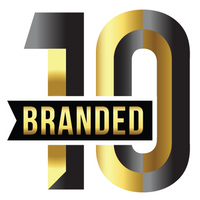
Business Casual Dress Code
Yes, business casual, we know it sounds confusing but we’re here to break everything down for you. Business casual is an oxymoron as it suggests two different things but is only one. After all, business implies formality and casual implies the opposite. So how do you understand the business casual dress code? And how do these two words work together? Let’s make sure we’re all on the same page and discuss these questions in this blog.
What is business casual?
Professionals and employees will be required to wear business casuals in the office. Business casual clothes are more comfortable and breathable than traditional officewear (a suit and tie) while still looking professional and appropriate for work. To sum up, the business casual dress code is about appropriate smart clothing worn in a way that enables you to be a little more laid back.
Furthermore, different workplaces will have their own business casual dress codes. Essentially that means that one office may consider a suit with no tie business casual while another might feel that a shirt with chinos or jeans is suitable enough. There isn’t just one way to dress up in business casuals as this definition changes for different organisations.
In essence, if you work for a bank in the city your business casual is more likely to be more formal than someone else who has a position in media or tech. But I think there is one thing we all can agree on. We would all like to be comfortable and relaxed in our smart clothing. Which of course is easier to say than do. But we will try to ensure you feel like that through the information conveyed below.
From the 1900s up until the 80s, it was a requirement that all professionals wear formal. But after business casuals slowly became more popular and casual became normal. Slowly society started shited to relaxed clothing in the workplace when they realised they could still work as hard.
In the last decade in western offices business, casual has become more relaxed with business casual only being required in the most formal of offices. Government businesses in the UK no longer require employees to wear a tie. And Goldman Sachs introduced flexible workwear in 2019. Now after COVID with many businesses choosing to opt for remote working there won’t be a need for business casuals when you’re working from home. And so the question now is will business casual be required? Yes because important formal meetings and work where you are required to look presentable will still take place offline. And so how do you dress in a business casual dress code?
Business casual dress code tips:
What to wear
An advantage to dressing in business casual is that you are not required to wear a formal jacket. We recommend keeping the bottom half smart and wearing chinos and leather shoes or loafers. Swap out your formal jacket for a lightweight one (if it’s cold.) Bombers also work well with business casual dress codes.
Be comfortable in your pants
Elasticated trousers have become widely accepted and popularised today. From street vendors to high-end brands you can find these trousers everywhere. These are trousers to go for if you’re seeking maximum comfort. We recommend wearing drawstring pants for the best of both worlds as they look very close to regular chinos without the fixed waistband.

Deck out your shirt
The business casual dress code no longer makes it necessary to stick to blue or white shirts to wear with your suit. Today it is acceptable to wear clothing far more stylish and comfortable. We recommend picking up denim or chambray shirts as they look smart but cooler when tucked into drawstring trousers.

Separates not matching
If you’re someone who works in finance or your business causal dress code opts for smarter clothing. We recommend avoiding a matching suit and outfit and rather, going for separates and contrast will provide you with plenty of ways to get creative. Complementary tones of brown, blue and neutral will always look great. For example and sky blue shirt layered under a navy blue suit and brown leather shoes is an outfit that has stood the test of time and makes you the best dressed in the room.

A great bag makes all the difference
Bags are a big useful accessory that can make or break your look. Ensure you choose a great-looking and good-quality bag to compliment your look because the wrong bad will undo all your hard work of creating your business casual outfit. Minimalistic bags provide a great look and choose a leather one for a premium, high-end look. If you’re looking for something smarter a good tote or briefcase will also look awesome. We recommend going for darker colours such as grey, black or brown.

The right shoes
In traditional offices the business casual dress code may be rather strict thus, the only option is to wear shiny brown or black oxford shoes. But if you’re business casual dress code is more lenient and forgiving there is a much larger range of shoes to choose from. Loafers and boots are solid options due to their versatility enabling them to be paired with many of your business casual outfits. Furthermore, sneakers can also be a great option if done correctly although we have to admit are not appropriate in every workplace. But if it is a clean look is to match your outfit with a minimalistic pair of leather trainers (air force 1s) to dress down your outfit.

Level up your timepiece:
A cold timepiece (watch) can shake up your entire outfit. Look for something simple yet elegant and it’ll do the business talk for you. A watch is a cherry on top of a business casual dress code.
This was the ultimate business casual dress code guide and we hope you understand how to dress up when going to a meeting or work. If you’re looking for great quality business causal clothing check out branded10 for some of the best clothing in the game!

FAQ:
Q: What is the business casual dress code for men?
A: Different workplaces will have their own business casual dress codes. Essentially that means that one office may consider a suit with no tie business casual while another might feel that a shirt with chinos or jeans is suitable enough.
Q: What men should not wear for business casual?
A: This will vary for different companies, however, generally shorts, joggers and track pants are not appropriate. However, it is also not necessary to wear suits and ties as business casual is normal in most offices.
Q: Are jeans OK for business casual?
A: Jeans are mostly appropriate for the workplace with a few exceptions. Your business casual jeans should be clean and free of any tears, fading or fraying. Also, avoid flash jeans with too much detail and stick to classic denim jeans.


